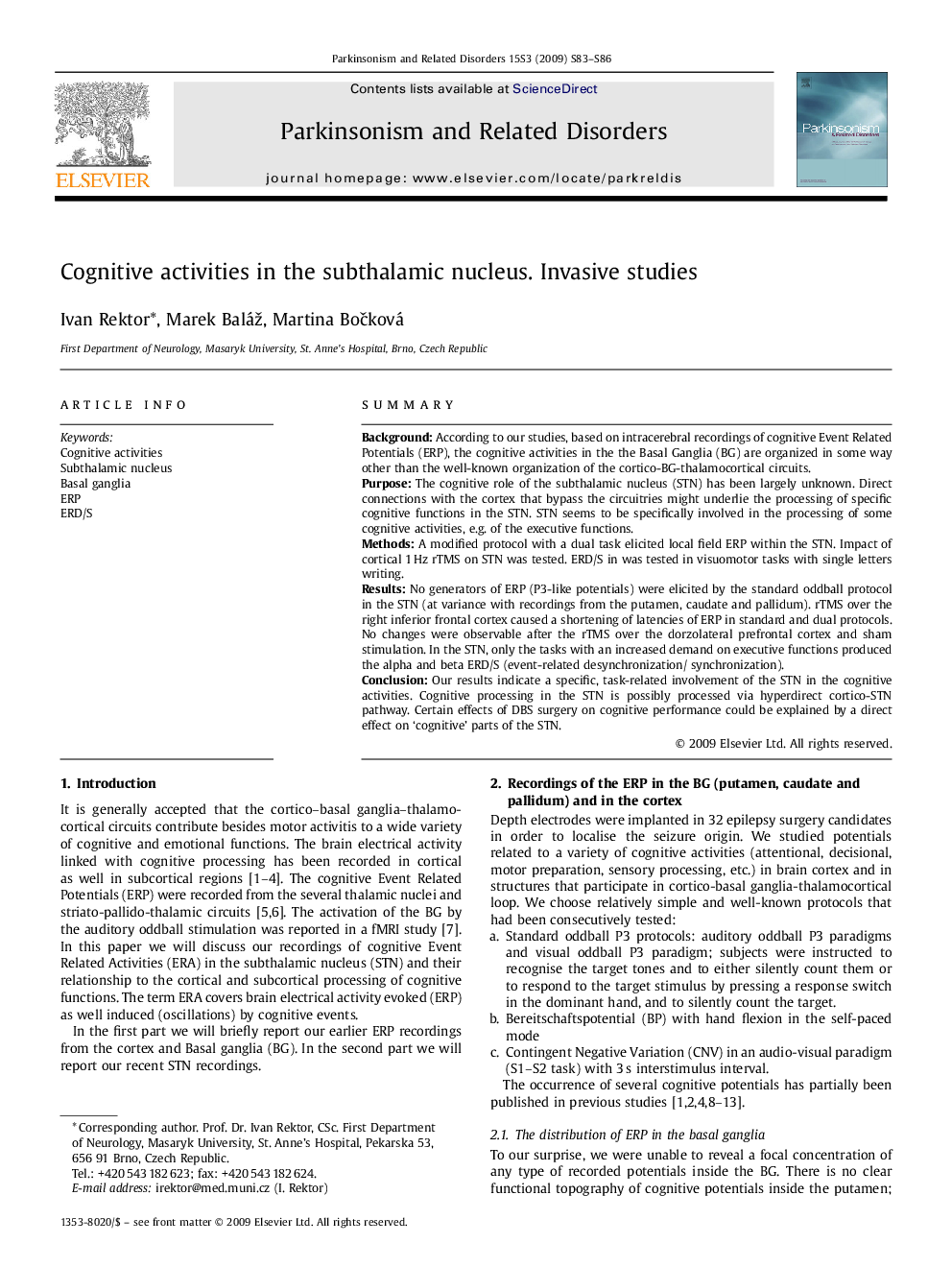| Article ID | Journal | Published Year | Pages | File Type |
|---|---|---|---|---|
| 1922042 | Parkinsonism & Related Disorders | 2009 | 4 Pages |
SummaryBackgroundAccording to our studies, based on intracerebral recordings of cognitive Event Related Potentials (ERP), the cognitive activities in the the Basal Ganglia (BG) are organized in some way other than the well-known organization of the cortico-BG-thalamocortical circuits.PurposeThe cognitive role of the subthalamic nucleus (STN) has been largely unknown. Direct connections with the cortex that bypass the circuitries might underlie the processing of specific cognitive functions in the STN. STN seems to be specifically involved in the processing of some cognitive activities, e.g. of the executive functions.MethodsA modified protocol with a dual task elicited local field ERP within the STN. Impact of cortical 1 Hz rTMS on STN was tested. ERD/S in was tested in visuomotor tasks with single letters writing.ResultsNo generators of ERP (P3-like potentials) were elicited by the standard oddball protocol in the STN (at variance with recordings from the putamen, caudate and pallidum). rTMS over the right inferior frontal cortex caused a shortening of latencies of ERP in standard and dual protocols. No changes were observable after the rTMS over the dorzolateral prefrontal cortex and sham stimulation. In the STN, only the tasks with an increased demand on executive functions produced the alpha and beta ERD/S (event-related desynchronization/synchronization).ConclusionOur results indicate a specific, task-related involvement of the STN in the cognitive activities. Cognitive processing in the STN is possibly processed via hyperdirect cortico-STN pathway. Certain effects of DBS surgery on cognitive performance could be explained by a direct effect on ‘cognitive’ parts of the STN.
